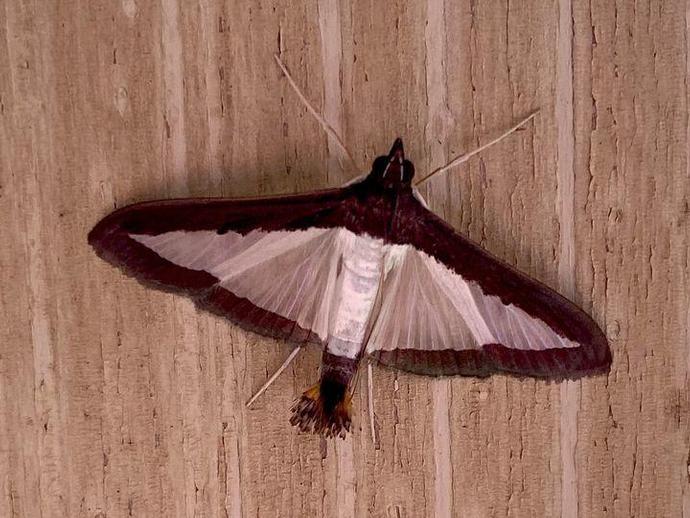December 25, 2021
Merry Christmas! We're reaching into the archives for today's #BenInNature update presented by our friends at Carter Bank & Trust! The following post was originally published on October 12, 2020.
The melonworm moth (Diaphania hyalinata) can be found throughout much of eastern North America, and its caterpillars can be a real pest if you have a garden. Melonworm caterpillars will eat the leaves of cucumbers, squash, pumpkins, and -- of course -- melons. However, the caterpillars aren't as big of an issue in the northern parts of the moth's range. In Virginia, you'll likely only see these moths in October and November. However, in the warmer Gulf states, melonworm moths produce multiple generations per year and can be found all year long!
Of course, one of the first things you might have noticed about this striking little moth is its unusual rear end. Those bristly structures at the tip of its abdomen are no fashion statement; they're actually something called "hair-pencils." Hair-pencils can be found on male butterflies and moths, and they release pheromones that act as aphrodisiacs to females of the species while repelling other males. When a male gets close to a female of the same species, he will extend his hair-pencils and fan his pheromones toward her. If she likes what she smells, she'll rapidly flick her antennae and then extend her abdomen to signal her interest. Bugguide.net didn't mention anything about flowers or mixtapes, but I like to think there's an element of romance there.
ABOUT #BenInNature
Social distancing can be difficult, but it presents a great opportunity to become reacquainted with nature. In this series of posts, Administrator of Science Ben Williams ventures outdoors to record a snapshot of the unique sights that can be found in the natural world. New updates are posted Monday - Friday, with previous posts highlighted on the weekends. This series of posts is made possible thanks to the support of VMNH Corporate Partner Carter Bank & Trust (www.cbtcares.com).
NATURE PHOTO IDENTIFICATIONS
If you discover something in nature that you would like help identifying, be sure to message us right here on Facebook with a picture (please include location and date of picture) and we'll have our experts help you identify it!

 Hours & Admissions
Hours & Admissions Directions
Directions

